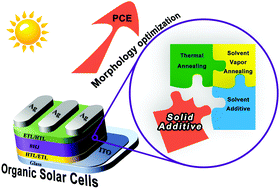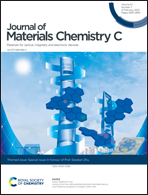Solid additives in organic solar cells: progress and perspectives
Abstract
The rapid development of organic solar cells (OSCs) has drawn enormous attention during the past few decades. Improving the power conversion efficiency (PCE) is the most important target in the research of OSCs. Active layer morphology plays an essential role in the performance of OSC devices; therefore, great efforts have been made to develop morphology optimization methodologies in order to realize the full potential of photoactive materials. Employing various additives during the fabrication of active layers has been widely used as a very effective method in morphology control. Recently, solid additives have drawn great attention owing to many attractive advantages including good morphology-directing abilities, simple post treatments and enhanced device stabilities. Research has demonstrated that many solid additives can significantly improve the PCE of OSCs, so that they are becoming the key elements for future high-performance OSC devices. However, there is still limited knowledge of the working mechanism of these solid additives, and hence, the general design rules for ideal solid additives are still under development. In this account, we provide a brief overview of the recently reported solid additives, which are categorized into non-volatile and volatile types based on their physical properties. Focused on their basic structures and function mechanisms, both organic and inorganic solid additives are reviewed, which could provide a useful guidance for the design of solid additives. Finally, the challenges and future perspectives of solid additives in OSCs are discussed.

- This article is part of the themed collection: Special issue in honour of Daoben Zhu


 Please wait while we load your content...
Please wait while we load your content...